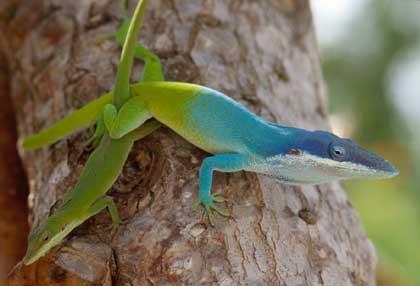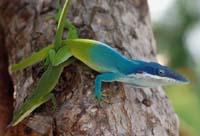Sexual dimorphism increases biodiversity
2007/05/10 Rementeria Argote, Nagore - Elhuyar Zientziaren Komunikazioa

In many species it is frequent that the male and the female are morphologically different: color, size... This is what is known as sexual dimorphism. Some species of lizard are dimorphic. Therefore, they have worked with lizards to see if there is a relationship between sexual dimorphism and biodiversity. And there seems to be a relationship: sexual dimorphism makes biodiversity greater.
The research was conducted with the Anolis lizards of the Great Antilles (Puerto Rico, Jamaica, Cuba and Hispaniola). In the islands, lizards have grown separately, adapting to different means. Thus, in these islands there are eleven varieties of Anolis lizard. And most lizards show a sexual dimorphism; those of the image, for example, are females on the left and male on the right.
Photo: M. M. Butler, S. Sawyer and J. Slabs.

Gai honi buruzko eduki gehiago
Elhuyarrek garatutako teknologia




